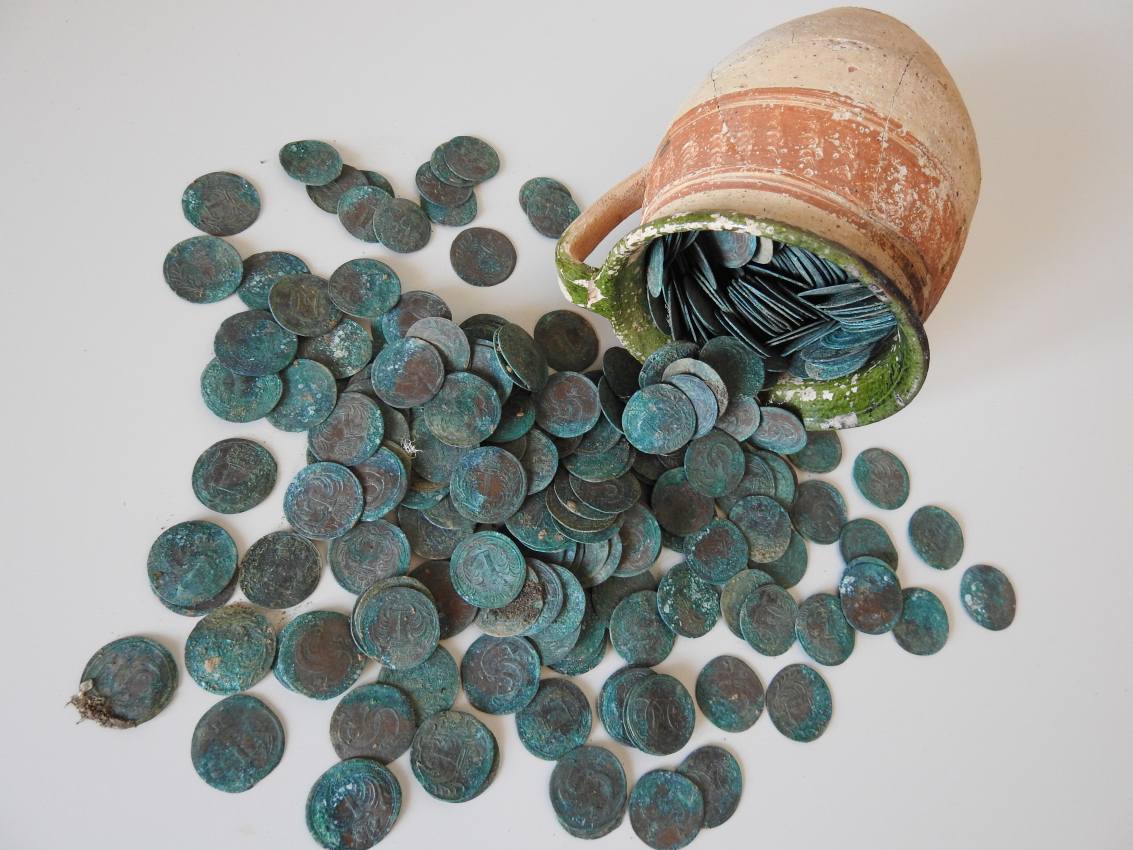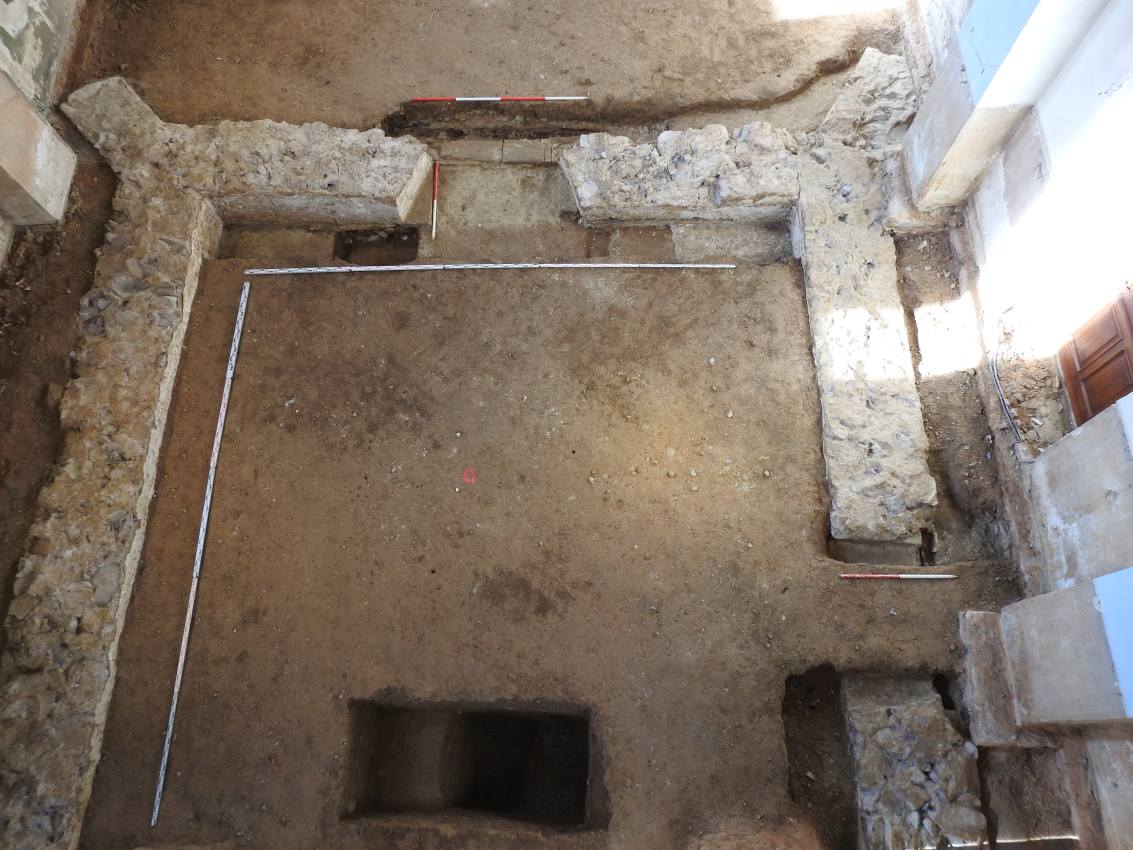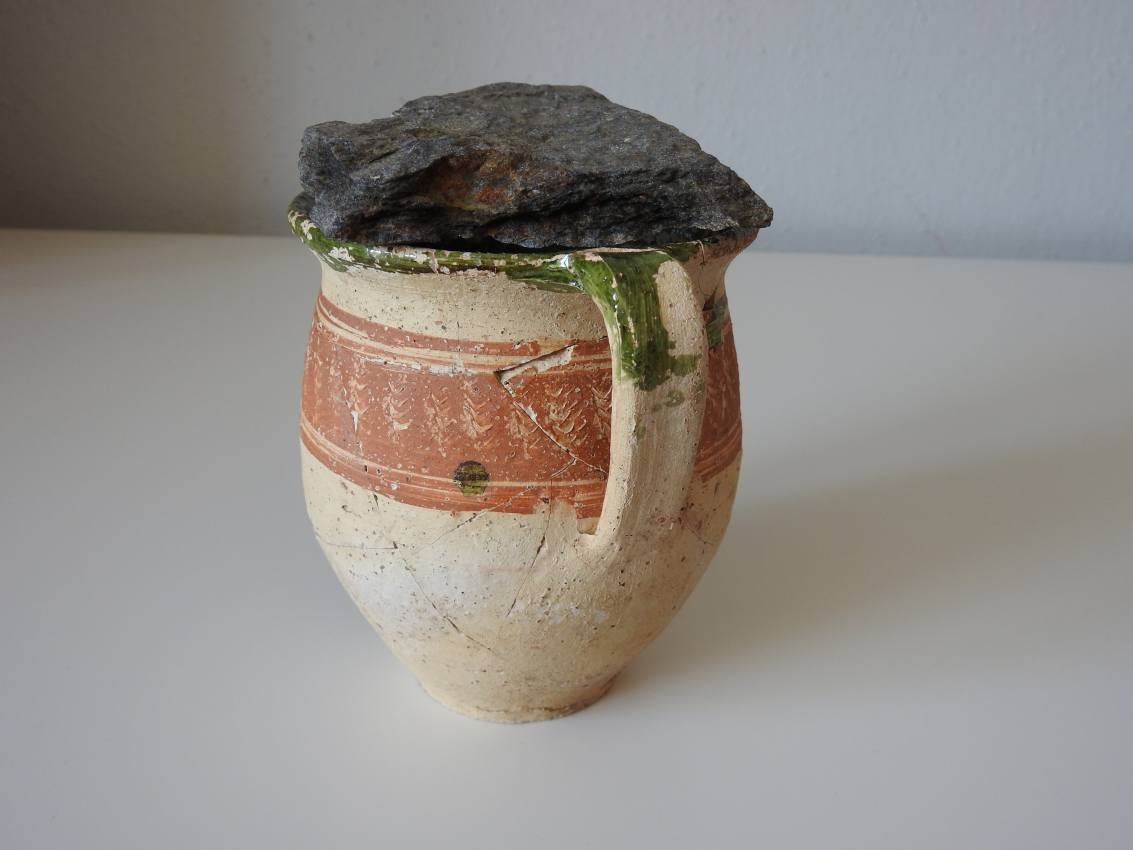Super příběh!
300-year-old coin hoard of a one-eyed priest found in Slovakia
Categories: Minting - Numismatics , Finds and rescue research in the Czech Republic

Under the floor of the Church of Our Lady of the Holy Rosary in Obisovce, near Košice in eastern Slovakia, a set of coins from the early 18th century was discovered in a covered cup.
The treasure was hidden in the foundations of the Renaissance church, which was demolished in the 19th century and a new, contemporary church was built over it. The older foundations were found during the reconstruction of the existing floor. On February 5, the third day of the excavation, archaeologists discovered a pot covered with a stone lid at the west entrance near the south lining.
The mug contained more than 500 coins, most of them miners' pay stamps. The silver coins were separately wrapped, probably in linen cloth. Several Polish coins were also found inside. The youngest coin was from 1702. The collection was probably gathered from the gifts of pilgrims who came to the church from various parts of the country in the 17th and 18th centuries. This is evidenced by pay stamps and coins minted in Košice, Smolník and Banská Štiavnica. Experts have named the treasure after a Polish Catholic priest who worked in the parish during this period.
The area was then part of the Kingdom of Hungary, ruled by the Catholic Habsburgs. In the 17th century, Protestant Hungarian noblemen fleeing from Turkish invaders moved to Upper Hungary in what is now Slovakia and temporarily changed the situation in favour of the Protestants. They joined with István Thököly in the failed plot to overthrow Leopold I in 1670 and again with his son Imre Thököly in the anti-Habsburg uprising of 1678.
Imre, in alliance with the Ottoman sultan, took control of territory in eastern and central Hungary and created the king ofUpper Hungary, which largely corresponds to the borders of Slovakia. In 1685 he suffered a crushing defeat by the Habsburgs and had to flee. However, Thököly's "peasant army" still resisted the Habsburgs. In 1703, the Hungarian prince Francis II of Hungary was defeated by Prince Franz II of Hungary. Rákóczi led a rebellion against the Habsburg Holy Roman Empire and then became involved in the War of the Spanish Succession. Rákóczi's rebellion lasted until his surrender in 1711.
The countless tumultuous events at the turn of the 17th and 18th centuries certainly gave many reasons to keep the treasure. Historical sources state that after the end of the Thӧkӧly Uprising, sometime between 1685 and 1687, a Polish Catholic priest returned to the parish of Kysak, which included Obisovce. In these sources he was referred to as monooculus - one-eyed. The church remained under Catholic administration until 1705, when it was sacked by the rebels and was not rebuilt for another three years afterwards. The then completely blind priest was exiled back to Poland without telling anyone about the treasure...
Roman Nemec


Sources: pamiatky.sk, farnostobisovce.sk, thehistoryblog.com
The article is included in categories:







